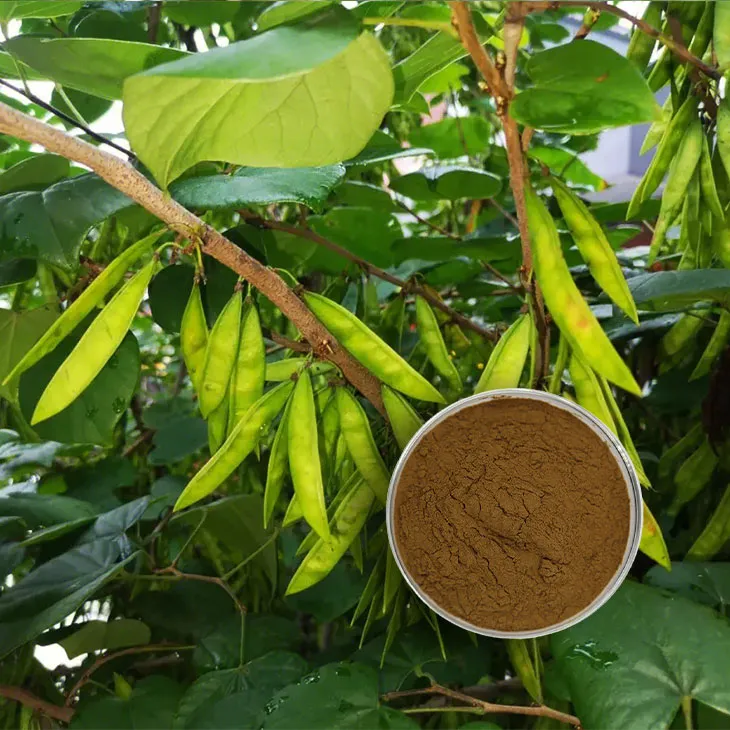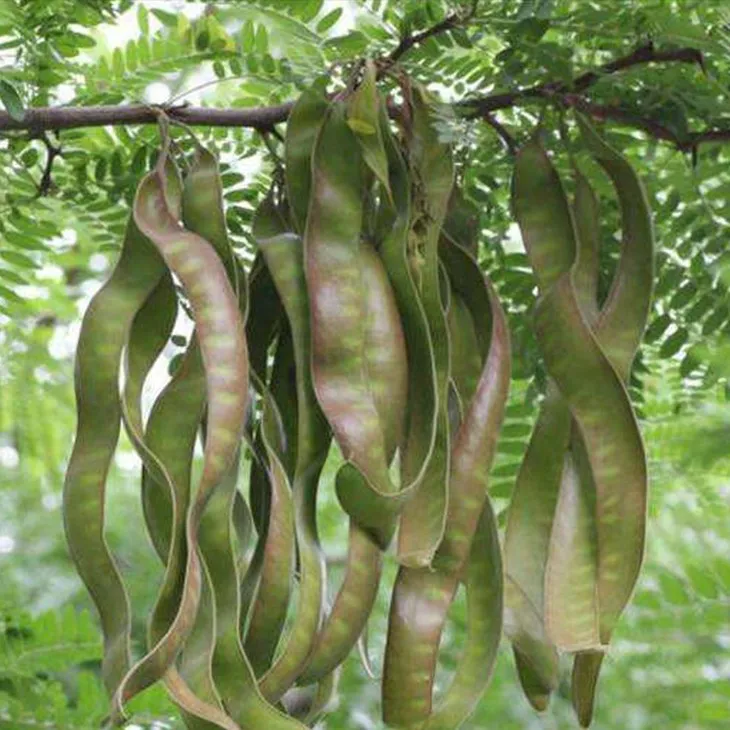- 0086-571-85302990
- sales@greenskybio.com
Sustainable Saponin Extraction: The Future of the Quillaja Saponin Market
2024-08-04

1. Introduction
The quillaja saponin market is currently at a crucial juncture, with a shift towards sustainable extraction methods becoming increasingly necessary. Quillaja saponins, which are derived from the Quillaja tree, are highly valuable compounds with a wide range of applications across multiple industries. In the food industry, they can be used as emulsifiers and foaming agents. In pharmaceuticals, they show potential in drug delivery systems, and in cosmetics, they are often incorporated for their surfactant properties.
However, the traditional extraction methods of quillaja saponins have led to several problems. These methods often involve extensive use of resources and can have a negative impact on the environment. For example, over - harvesting of the Quillaja tree without proper management can lead to a decline in its population, which in turn can disrupt the ecosystems where these trees are found. Moreover, some extraction processes may use chemicals that are harmful to the environment if not properly disposed of.

2. The Importance of Sustainable Saponin Extraction
2.1 Environmental Conservation
Sustainable extraction of quillaja saponins is essential for environmental conservation. The Quillaja tree is an important part of the ecosystems in which it grows. By implementing sustainable extraction practices, we can ensure that the tree populations are maintained at healthy levels. This includes measures such as selective harvesting, which allows the Quillaja trees to regenerate and continue to play their ecological roles. For instance, the trees provide habitat for various species of animals and insects, and they also contribute to soil stability.
Furthermore, sustainable extraction can reduce the environmental impact of the chemicals used in the extraction process. By using more environmentally friendly solvents or extraction techniques, such as supercritical fluid extraction, the amount of harmful waste generated can be minimized. This not only protects the local environment around the extraction sites but also has a positive impact on the overall global environment.
2.2 Meeting Market Demand
The demand for quillaja saponins in various industries is growing steadily. In the food industry, consumers are increasingly demanding natural additives, and quillaja saponins fit this bill perfectly as they are derived from a natural source. In the pharmaceutical and cosmetic industries, the unique properties of quillaja saponins are being explored further for new product development.
Sustainable extraction methods are crucial for meeting this growing market demand in the long - term. If we continue with traditional, non - sustainable extraction methods, we may face a shortage of quillaja saponins in the future as the Quillaja tree populations decline. Sustainable extraction, on the other hand, can ensure a continuous supply of these valuable saponins by promoting the healthy growth and management of the Quillaja tree resources.

3. Sustainable Extraction Practices
3.1 Selective Harvesting
Selective harvesting is a key sustainable practice in the quillaja Saponin Extraction. Instead of clear - cutting large areas of Quillaja forests, only mature trees are selected for harvesting. This allows younger trees to continue growing and ensures the long - term viability of the tree population. Selective harvesting also takes into account the distribution of the trees within the forest, ensuring that the overall ecosystem structure is maintained.
For example, in some well - managed quillaja Saponin Extraction operations, harvesters are trained to identify trees that are of the appropriate age and health for harvesting. They also follow strict guidelines on the number of trees that can be harvested from a particular area, based on scientific studies of the tree's growth rate and regeneration capacity.
3.2 Green Extraction Technologies
Green extraction technologies play a vital role in sustainable saponin extraction. One such technology is supercritical fluid extraction. Supercritical carbon dioxide (scCO₂) can be used as a solvent for extracting saponins from the Quillaja tree. The advantages of using scCO₂ are numerous. Firstly, it is a non - toxic and non - flammable solvent, which makes it much safer than many traditional organic solvents.
Secondly, scCO₂ can be easily removed from the extracted saponins, leaving behind a pure product without any solvent residues. This is especially important for applications in the food, pharmaceutical, and cosmetic industries where purity is of utmost importance. Other green extraction technologies, such as microwave - assisted extraction and ultrasound - assisted extraction, are also being explored for their potential in sustainable quillaja saponin extraction.

4. Economic Benefits of Sustainable Practices
4.1 Long - term Cost Savings
Sustainable extraction practices can lead to long - term cost savings. For example, by implementing selective harvesting, the cost of replanting and re - establishing Quillaja tree populations can be reduced. Instead of having to start from scratch in areas where the tree population has been depleted due to over - harvesting, a well - managed selective harvesting system can ensure a continuous supply of trees for extraction.
Green extraction technologies, although they may require an initial investment, can also result in cost savings in the long run. For instance, the use of supercritical fluid extraction can reduce the cost associated with solvent disposal, as there are no harmful solvents to dispose of. Additionally, the pure products obtained through green extraction technologies can often command a higher price in the market, leading to increased revenue.
4.2 Market Expansion
As consumers become more environmentally conscious, products derived from sustainable sources are becoming more popular. In the case of quillaja saponins, sustainable extraction practices can open up new market opportunities. Many companies in the food, pharmaceutical, and cosmetic industries are now looking for suppliers who can provide sustainable - sourced quillaja saponins.
By adopting sustainable extraction methods, producers of quillaja saponins can target these environmentally - conscious markets, both domestically and internationally. This can lead to an expansion of the market share and increased profitability. For example, a quillaja saponin producer that can prove its sustainable extraction practices through certifications such as organic or fair - trade may be able to enter new markets and gain a competitive edge over non - sustainable producers.

5. Social Benefits of Sustainable Practices
5.1 Community Engagement
Sustainable quillaja saponin extraction can involve local communities in a positive way. For example, in areas where the Quillaja tree grows, local communities can be involved in the selective harvesting process. This can provide employment opportunities for community members, both in the harvesting and in the subsequent processing of the saponins.
Moreover, sustainable extraction practices often require training and education, which can be provided to the local community. This not only improves the skills of the community members but also empowers them to take part in a more sustainable and profitable industry. Community - based sustainable extraction projects can also help to preserve the local culture and traditions associated with the Quillaja tree.
5.2 Ethical Considerations
There are important ethical considerations associated with sustainable quillaja saponin extraction. By ensuring that the extraction process is sustainable, we are respecting the rights of future generations to also benefit from the resources provided by the Quillaja tree. This is in line with the principle of inter - generational equity.
Furthermore, sustainable extraction practices can also ensure that the rights of indigenous communities, if any, are respected. In some regions, the Quillaja tree may have cultural or spiritual significance for indigenous people. Sustainable extraction should take into account these cultural values and ensure that the extraction process does not harm or disrespect the indigenous communities.
6. Challenges and Solutions in Implementing Sustainable Extraction
6.1 Technological Barriers
One of the main challenges in implementing sustainable extraction of quillaja saponins is the technological barriers. Although green extraction technologies such as supercritical fluid extraction show great promise, they may require significant investment in equipment and training. Small - scale producers may find it difficult to afford the initial investment required for these technologies.
To overcome this challenge, government support and incentives can be provided. For example, grants or low - interest loans can be made available to small - scale producers to help them upgrade their extraction facilities to more sustainable technologies. Additionally, research institutions can collaborate with producers to develop more cost - effective and accessible green extraction technologies.
6.2 Regulatory Frameworks
The lack of clear and comprehensive regulatory frameworks for sustainable quillaja saponin extraction is another challenge. Currently, there may be no specific regulations governing the sustainable harvesting of the Quillaja tree or the use of green extraction technologies in the extraction of saponins.
To address this, regulatory bodies need to develop and enforce regulations that promote sustainable extraction. These regulations could include guidelines on selective harvesting, limits on the use of certain chemicals in extraction, and requirements for environmental impact assessments. International cooperation can also play a role in developing global standards for sustainable quillaja saponin extraction.
7. Conclusion
In conclusion, sustainable saponin extraction is the future of the quillaja saponin market. It is essential for environmental conservation, meeting market demand, and realizing economic and social benefits. While there are challenges in implementing sustainable extraction practices, such as technological barriers and lack of regulatory frameworks, there are also solutions available.
By promoting selective harvesting, green extraction technologies, and involving local communities, the quillaja saponin market can move towards a more sustainable future. With the right support from governments, research institutions, and regulatory bodies, sustainable quillaja saponin extraction can not only ensure the long - term viability of the Quillaja tree populations but also contribute to the growth and development of the industries that rely on these valuable saponins.
FAQ:
What are the traditional extraction techniques for quillaja saponin?
Traditional extraction techniques for quillaja saponin often involve methods that may not be environmentally friendly. These can include solvent - based extractions where large amounts of organic solvents are used. This can lead to issues such as solvent waste disposal and potential contamination of the environment. Additionally, some traditional methods might not be efficient in terms of resource utilization, potentially wasting parts of the Quillaja tree that could otherwise be conserved.
Why is sustainable extraction important in the quillaja saponin market?
Sustainable extraction is crucial in the quillaja saponin market for several reasons. Firstly, it helps to protect the Quillaja tree populations which are the source of saponin. Over - exploitation through non - sustainable methods can lead to the depletion of these trees. Secondly, it safeguards the ecosystems in which the Quillaja trees are found. These ecosystems are home to a variety of other species, and any disruption due to unsustainable extraction can have far - reaching ecological consequences. Moreover, sustainable extraction can ensure a long - term supply of quillaja saponin to meet the growing market demands in industries like food, pharmaceuticals, and cosmetics.
What are the potential economic benefits of sustainable practices in the quillaja saponin market?
The potential economic benefits of sustainable practices in the quillaja saponin market are significant. For one, it can lead to long - term cost savings. By using sustainable extraction methods, companies can avoid potential costs associated with environmental regulations violations that might occur with non - sustainable methods. Sustainable practices can also enhance the marketability of quillaja saponin - based products. As consumers are becoming more environmentally conscious, products sourced through sustainable means are likely to be more appealing, which can lead to increased sales and market share. Additionally, sustainable extraction can support local economies in areas where Quillaja trees are grown. It can create jobs in sustainable forestry management and in the development of new, more efficient extraction technologies.
How can sustainable saponin extraction meet the growing market demand?
Sustainable saponin extraction can meet the growing market demand through several approaches. One way is by improving the efficiency of extraction methods. This means getting more saponin from each Quillaja tree without causing harm to the tree or its environment. Another approach is through the cultivation of Quillaja trees in a sustainable manner. This can increase the overall supply of the raw material for saponin extraction. Additionally, research and development in sustainable extraction technologies can lead to new ways of processing saponin that are both environmentally friendly and capable of producing larger quantities to satisfy market needs.
What are the social benefits associated with sustainable extraction in the quillaja saponin market?
The social benefits associated with sustainable extraction in the quillaja saponin market are numerous. It can contribute to the well - being of local communities where the Quillaja trees are located. For example, sustainable extraction practices often involve the employment of local people in activities such as tree cultivation, harvesting, and extraction operations. This provides income and livelihood opportunities. It can also lead to the preservation of local cultural traditions related to the use and management of Quillaja trees. Moreover, sustainable extraction promotes environmental education and awareness within these communities, which can have long - term positive impacts on their overall quality of life.
Related literature
- Sustainable Extraction of Bioactive Compounds from Quillaja Saponin: A Review"
- "The Future of Quillaja Saponin: Towards Sustainable and Eco - friendly Extraction"
- "Quillaja Saponin Market: The Role of Sustainable Extraction in Industry Growth"
- ▶ Hesperidin
- ▶ Citrus Bioflavonoids
- ▶ Plant Extract
- ▶ lycopene
- ▶ Diosmin
- ▶ Grape seed extract
- ▶ Sea buckthorn Juice Powder
- ▶ Fruit Juice Powder
- ▶ Hops Extract
- ▶ Artichoke Extract
- ▶ Mushroom extract
- ▶ Astaxanthin
- ▶ Green Tea Extract
- ▶ Curcumin
- ▶ Horse Chestnut Extract
- ▶ Other Product
- ▶ Boswellia Serrata Extract
- ▶ Resveratrol
- ▶ Marigold Extract
- ▶ Grape Leaf Extract
- ▶ New Product
- ▶ Aminolevulinic acid
- ▶ Cranberry Extract
- ▶ Red Yeast Rice
- ▶ Red Wine Extract
-
Apricot Powder
2024-08-04
-
Stevia Extract
2024-08-04
-
Kelp Extract Powder
2024-08-04
-
Acerola Extract
2024-08-04
-
Beetroot Powder
2024-08-04
-
Mangosteen extract powder
2024-08-04
-
Green Tea Extract
2024-08-04
-
Yam Extract
2024-08-04
-
Bayberry Extract
2024-08-04
-
Echinacea Extract
2024-08-04





















